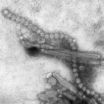(Press-News.org) ANN ARBOR, Mich. — A decade ago, America's health care community took on heart attacks with gusto, harnessing the power of research and data to make sure that every patient got the best possible care.
It worked: Death rates for heart attack have dropped. The same has happened with heart failure and pneumonia. Now, say a pair of University of Michigan Medical School experts, it's time to do the same for sepsis.
Sepsis may not have the same name recognition as heart attacks -- but it now affects more hospital patients, and leads to more hospital costs, than any other diagnosis. Half of all in-hospital deaths involve sepsis.
Caused by a body-wide over-reaction to any kind of infection, it can lead to damage of vital organs and now kills one in every six people diagnosed with it. More people die from sepsis than die from prostate cancer, breast cancer and AIDS combined.
In a new viewpoint article in the Journal of the American Medical Association, the authors lay out the case for a national system that would hold hospitals and care teams accountable for sepsis diagnosis and care.
Just as it has done for other diseases, the federal government should set clear standards and targets for the kind of care that gives sepsis patients the best odds of surviving, they say. But unlike in previous efforts, the approach should incentivize better detection, start with regional collaboratives to determine the best approaches, and respond to new evidence from rapidly evolving sepsis research.
The authors have both studied sepsis care for years, and treated many patients with the condition themselves in intensive care units at the U-M Health System. Currently, they note, only about one-third of sepsis patients nationwide receive the best possible care – despite national guidelines to help hospitals and doctors recognize and treat it. Late and missed diagnoses are common.
"Now's the time to focus on quality improvement in sepsis, because it has become one of the most important conditions in hospitals, it attacks more and more patients, and we can learn from the years of work in other conditions," says Colin Cooke, M.D., M.Sc., M.S., a U-M critical care physician who authored the article. "We believe that by creating a framework for quality improvement in sepsis care that takes into account evolving knowledge of this condition, we can improve patients' odds of survival and reduce variation in care."
If done right, he and co-author Theodore Iwashyna, M.D., Ph.D., note, it could become a model for new ways to take on other conditions that send many patients to the hospital.
The lack of a single diagnostic tool or test to quickly tell doctors that a patient has developed sepsis poses a major challenge, they say. So efforts to improve and speed detection must be part of any sepsis quality initiative.
"There is not just one magical test to detect sepsis," says Iwashyna. "Excellent sepsis care requires careful clinical judgment and good teamwork, but at the same time it has to happen fast. This is not easy. But we have to improve our quality of care even when it is not easy."
A key path forward, they say, will be an effort to learn from the experience of hospitals and health systems that have cut their own sepsis mortality rates by studying and improving the care they provide and the systems that support it.
Taking those lessons and testing them in a broader setting, for instance a single state, would help the federal government phase in sepsis quality measures. This approach keeps the process moving forward, while avoiding the mistakes that can come from setting out a national mandate without testing whether it will work in the way they hope.
Since sepsis research is still yielding important new knowledge about how the condition arises, masquerades as other syndromes and responds to treatment, quality measures must adapt to new findings, the authors say.
The federal Centers for Medicare and Medicaid Services, which oversees a wide array of health care quality measurement, reporting and incentive efforts, has approved a set of measures that it will begin tracking for all hospitals in 2017.
While this is a good step, say Cooke and Iwashyna, it follows the pattern of past such efforts. "This is an opportunity to make quality improvement more responsive, to emphasize recognition and diagnosis in a way that doesn't create perverse incentives against honest reporting, and that takes advantage of what we're still learning about sepsis care," says Cooke.
INFORMATION:
Cooke is an assistant professor, and Iwashyna an associate professor, in the Pulmonary & Critical Care Division of the U-M Department of Internal Medicine.
Both are members of the U-M Institute for Healthcare Policy & Innovation and the Michigan Center for Integrative Research in Critical Care. Cooke is also a member of the Center for Healthcare Outcomes & Policy. Iwashyna also holds appointments in the U-M Institute for Social Research and the VA Ann Arbor Healthcare System, and is a Research Scientist at the VA Center for Clinical Management Research.
Reference: JAMA Viewpoint, October 8, 2014 Volume 312, Number 14
An experimental vaccine to protect people against H7N9 avian influenza prompted immune responses in 59 percent of volunteers who received two injections at the lowest dosage tested, but only if the vaccine was mixed with adjuvant—a substance that boosts the body's response to vaccination. Without adjuvant, immune responses produced by the investigational vaccine were minimal regardless of vaccine dosage, according to findings from a clinical trial sponsored by the National Institute of Allergy and Infectious Diseases (NIAID), part of the National Institutes of Health.
The ...
A large, NIH-sponsored clinical trial of an experimental H7N9 avian influenza vaccine found an immune response that was believed to be protective in 59 percent of study participants who received two injections of the inactivated vaccine at the lowest dosage tested when mixed with an adjuvant – a component that boosts the body's immune response and enhances the effectiveness of inactivated influenza vaccines.
Participants who received a vaccine without the adjuvant had a minimal immune response.
The results are published in the Journal of the American Medical ...
VIDEO:
This video shows the sole of a shoe as it appears from different perspectives in rendering software. The shoe was placed upside down on an optical table (seen as flat...
Click here for more information.
Researchers at the National Institute of Standards and Technology (NIST) have demonstrated a laser-based imaging system that creates high-definition 3D maps of surfaces from as far away as 10.5 meters.* The method may be useful in diverse fields, including precision machining ...
(SALT LAKE CITY)—University of Utah biochemists have reported a new drug discovery tool against the Ebola virus. According to a study published in this week's online edition of Protein Science, they have produced a molecule, known as a peptide mimic, that displays a functionally critical region of the virus that is universally conserved in all known species of Ebola. This new tool can be used as a drug target in the discovery of anti-Ebola agents that are effective against all known strains and likely future strains.
The University of Utah (U of U) work, which was ...
The link between low average glucose blood levels and greater risk for severe hypoglycemia and hypoglycemic coma substantially declined between 1995 and 2012 in young Germans and Austrians with type 1 diabetes, according to a study published by Beate Karges and colleagues from the RWTH Aachen University, Germany in this week's PLOS Medicine.
The researchers obtained measurements of average blood glucose levels (measured as HbA1c) and the incidents of severe hypoglycemia and hypoglycemic coma from 37,539 children and young adults with type 1 diabetes between 1995 and 2012 ...
Treatment with dimercaptosuccinic acid (DMSA), an oral chelation agent, was linked to reductions in the amount of lead in blood in young children in Zamfara State, Nigeria following environmental lead contamination, according to a study by Jane Greig and colleagues from Médecins Sans Frontières (MSF) published in this week's PLOS Medicine.
The researchers report findings from an MSF program initiated in May 2010 to reduce lead poisoning in children following widespread environmental lead contamination due to gold mining in Zamfara State, Nigeria, leading to ...
A fundamental question in neurobiology is how animals, including humans, make decisions. A new study publishing in the open access journal PLOS Biology on October 7 reveals how fruit fly females make a very important decision: to either accept or reject male courtship. This decision appears to be generated by a very small number of excitatory neurons that use acetylcholine as their neurotransmitter located in three brain regions. This study provides the framework to understand how decisions are generated and suggests that a decision is reached because that option is literally ...
Researchers at the University of California, San Diego School of Medicine have, for the first time, clearly defined the epidemiology of gastrointestinal stromal tumors (GIST), which occur primarily in the lining of the stomach and small intestine. One key finding: Patients of Asian descent, who have not previously been identified as an at-risk population, are 1.5 times more likely than other patient groups to be diagnosed with this type of tumor. Results of the study were published this week in Cancer Epidemiology, Biomarkers & Prevention, a journal of the American Association ...
WASHINGTON (Oct. 7, 2014) — Nearly 20 percent of Americans have a disability, yet only 25 percent of medical schools include in their curricula caring for people with disabilities. Numerous reports have documented that people with disabilities have poorer health and receive inferior care.
In a Narrative Matters essay published in Health Affairs, Leana Wen, M.D., director of patient-centered care research and assistant professor of emergency medicine at the George Washington University School of Medicine and Health Sciences, shares her own experiences to highlight ...
COLUMBUS, Ohio – A molecule that helps cancer cells evade programmed self-destruction, an internal source of death, might also help malignant cells hide from the immune system, an external source of death.
A new study by researchers at The Ohio State University Comprehensive Cancer Center – Arthur G. James Cancer Hospital and Richard J. Solove Research Institute (OSUCCC – James) shows that a molecule called nuclear factor kappa B (NF-kB) helps cancer cells by inhibiting the immune system's ability to detect and destroy them. The molecule regulates genes ...


